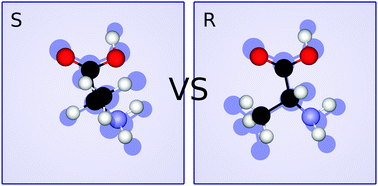Theoretical investigation of amino-acid adsorption on hydroxylated quartz surfaces: dispersion can determine enantioselectivity
Abstract
Chiral mineral surfaces, such as quartz, are attractive substrates for use in enantioselective separation and may have contributed to the origin of biological homochirality. In this work, we apply density-functional theory and the exchange-hole dipole moment (XDM) dispersion model to study the adsorption of 5 amino acids (glycine, serine, alanine, valine, and phenylalanine) on a hydroxylated α-quartz (0001) surface. It is demonstrated that London dispersion is responsible for 30–50% of the total adsorption energies and its inclusion or omission can reverse predictions of enantioselectivity. Differing dispersion stabilization, caused by the opposing side-chain placements relative to the quartz surface, lead to differences of 1.0 and 1.8 kcal mol−1 in the adsorption energies of the alanine and phenylalanine enantiomers, respectively. These results are consistent with a 3-point model, with the hydrogen-bonding sites conserved and variations in the dispersion interactions determining enantioselectivity.

- This article is part of the themed collection: 2020 PCCP HOT Articles


 Please wait while we load your content...
Please wait while we load your content...